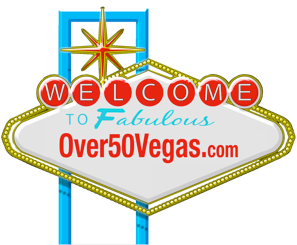- About Over50Vegas
- How did Las Vegas become Las Vegas?
- Observations by Charles "Pop" Squires- Las Vegas Pioneer and Publisher
- Books and References Sites
- Las Vegas Phonebook and City Directories of Bars, Casinos and Hospitality Properties
- Casino Collectible Shows & Local Meetings
- Visit the ChipGuide
- Visit the Museum of Gaming History
- Visit the Casino Chip & Gaming Token Collectors Club, Inc.
- Sitemap by name of property
- Sitemap by address of property
- Click here to request page update notifications
- Contact Over50Vegas
110 N. 1st St.
Las Vegas, NV
Golden Camel
1931 to c.1932 and 1938-c.1939 (Dates of Gaming License)
(Open as a bar through at least 1952)
Black Camel Bar
1932 to ?
Directories listings for Foreign club, golden camel, exchange club, Fremont Tavern, esquire lounge, frontier club, eight ball bar, ACE bar, Cinnabar, club 25, Dog Haus house bar, drive-in liquor store, Apache bar, Barrel House, Little Casino Bar, Mission Bar, Nevada Club, Rainbow Cafe, Rex Bar, Tivoli Tavern
The Cactus Garden was owned by Paul Warner, who later became an assemblyman and served a couple or three terms. There was the Red Barn, the Black Cat, the Cave—which was built into a regular cave. It wasn’t a very large place, but it was attended. And there was the L.A. Beer Parlor, the Bull Pen, the Red Mill. Those were the night spots that the people of Las Vegas and the people in Boulder City and along the way in visited as their entertainment.
Las Vegas had its share of bootlegging establishments. Probably the most famous was the Golden Camel, which was located on the alley between Fremont Street and Ogden Street on First Street. It was operated by Fred Rump, who came here from Colorado. This was the gathering place for the entire community on a Saturday night. Every Saturday night the Golden Camel used to provide the women with orchids, which was the forerunner of the various giveaways which the gambling casinos and hotels went in for in a later date.
There also was the Nevada Club, which was run by Sammy and Dave Stearns, across the street and a little north of the Golden Camel. And across the street again from the Nevada Club was the Tivoli Bar and the La Salle Club. There was a place on Fremont Street, between Main and First Street, that was known as the Barrel House. This was owned by Art Schriver and Wes Westmoreland. Then Joe Morgan had his Silver Club on First Street, right off of Fremont Street.

The Golden Camel was licensed for Slots, 21, and Craps.
Licenses issued to:
1931-1932? "Rumph"
1938-1939? - Joe Morgan
According to Fuller's Index Plus
There are few collectibles surviving from the Golden Camel, but this match cover and the images following are a few I've found and have been shared with me.


Here's a very hard to find
glass swizzle stick, generously
shared with me by the PGG Collection.

Business card for the Golden Camel with Joe Morgan's name on it.
Morgan was associated with various bars including the Silver Club.
Thanks to Art Nelson for sharing this great collectible.
Prohibition, known informally as the Volstead Act, came into force at midnight on January 17, 1920.
It provided that "no person shall manufacture, sell, barter, transport, import, export, deliver, or furnish any intoxicating liquor except as authorized by this act."
This failed social experiment was repealed December 5, 1933. The 13 year prohibition period gave an unprecedented opportunity to small business people to expand their businesses as detailed in part in the excerpt below.
Directory listings for the early bars, saloons, and gaming establishments in downtown Las Vegas.
Many of which went from bootleg joints to licensed businesses.

Las Vegas had its share of bootlegging establishments. Probably the most famous was the Golden Camel, which was located on the alley between Fremont Street and Ogden Street on First Street
Las Vegas had its share of bootlegging establishments. Probably the most famous was the Golden Camel, which was located on the alley between Fremont Street and Ogden Street on First Street
In the photo above is the Golden Camel, the Silver Club at 108 N. 1st.
and the sign for La Bonita Hotel 30 E. Fremont at the corner with Fremont Street and North 1st Street.

This mirrored thermometer was a popular souvenir given out to customers of various entertainment establishments. It is approximately 8 inches wide and 9 inches tall.
This one from the Golden Camel was shared by James Chmiel.

Over50Vegas.com by Over50Vegas.com is licensed under a Creative Commons Attribution-NonCommercial-NoDerivs 3.0 Unported License.
Based on a work at http://over50vegas.com/index.html.
This is a non-commercial, educational, hobby site. Images on this site are from our personal collection and from personal collections of fellow enthusiasts who have shared their scans with us. Other images are noted by source with links to the original. If you feel that any image used here has infringed upon fair use of an image you hold the copyright to, please contact us at the links above and it will be credited or removed at your request.
Sources you might want to visit for more information include:

Search for anything on this site. Click "Advanced" to narrow your search.

